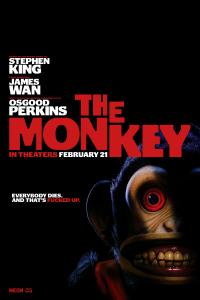Torrent details for "Decision Theory - (BookRAR)" Log in to bookmark
Controls:
Language:
 English
EnglishTotal Size:
11.27 MB
Info Hash:
9e8cde997157a6cc348299c63ca2d318cb13dc62
Added By:
Added:
21-02-2021 05:47
Views:
336
Health:

Seeds:
0
Leechers:
0
Completed:
45
Thanks for rating :
p751 (5),
(5),
p751

Description
The academic discipline of Statistics is a branch of mathematics that develops and uses techniques for the careful collection, effective presentation, and proper analysis of numerical information. These techniques can be applied to find answers to questions that arise in all areas of human endeavor. Medical researchers use them to test the safety and effectiveness of new drugs or to appraise the effects of lifestyle changes; nutritionists use them to investigate health claims associated with foods or dietary supplements; business executives use them to assess the results of marketing campaigns or the effect of new methods of production on product quality. Economists use them to forecast the business cycle; politicians to predict the outcome of future elections. Spies use them decipher coded messages. The list goes on. No wonder that Statistics has been called a universal guide to the unknown.
Consider your own health, one among millions of topics that Statistics could address. Every day we meet new health-related stories ̶ about prescription and over-the-counter drugs, medical devices and procedures, the lifestyle we should adopt, foods we should favor, and dietary supplements that would surely add years to our lives. Rightly, we dismiss many of these stories as pure snake oil. Mayonnaise prevents Alzheimer’s ? Chelation therapy blasts arterial plaque ? Food coloring lowers bad cholesterol? Come on! But what about more serious-sounding claims? Reports about ACE inhibitors, 64-slice CT scans, and drug-coated stents appear to be far removed from snake oil, but false claims about any of these may well occur, even in renowned medical journals, which makes them snake oil no less than absurd and fantastic claims about mayonnaise and Alzheimer’s.
Luckily, a knowledge of Statistics offers a remedy. It helps us adopt the special way of statistical thinking that is routinely employed by the best of those who undertake the scientific studies that alone can generate medical knowledge we can trust.
The field, however, is so vast that no single book can reasonably cover all of it. This author, therefore, has divided the field into 24 sections that are made available as separate electronic books from which readers can select the subset that is most useful to them.
Book 23 focusses on decision making under uncertainty. It shows how to 1. make decisions even when nothing is known about the likelihood of alternative future events that are certain to affect the eventual outcome of a present decision, employing decision criteria such as maximin, minimax, maximax, minimin, and even minimax regret, 2. engage in prior analysis, a form of decision making that employs whatever probabilities are available prior to gathering new experimental or sample evidence and that uses such alternative decision criteria as maximum likelihood, expected monetary value, expected opportunity loss, and expected utility, 3. carry out posterior analysis, a form of decision making that starts out with prior probabilities, proceeds to gather additional evidence about the probabilities of future events, and then uses this new evidence, by means of Bayes’ theorem, to transform prior probabilities into a revised set of posterior probabilities with the help of which a final decision is reached, 4. figure the maximum amount of money a decision maker can be expected to pay for obtaining perfect and even imperfect information about future events, 5. engage in preposterior analysis, a form of decision making that decides the worth of obtaining additional information before proceeding to prior or posterior analysis, and, thus, combines the two– more often than not, in an easy-to-read decision tree.
Book 23 includes numerous tests (71 Practice Problems, almost 100 True-False and Multiple-Choice questions, and an exercise involving 50 key terms), along with answers for all
Book Details
Language: English
Published: 2021
ISBN: N/A
Format: PDF, EPUB, AZW3










































